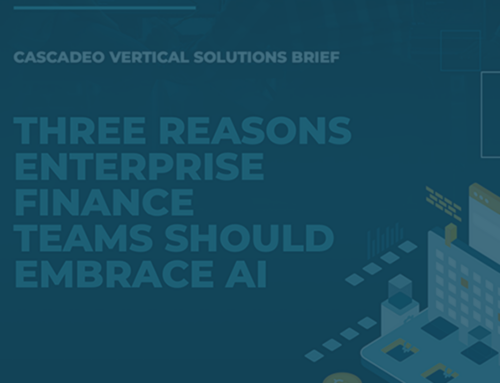
If time is money and knowledge is power, building a generative AI program to streamline and improve predictive and reporting functions can dramatically increase your hold on both.
Amplify the Predictive Power of Data with Generative AI
 Data driven industries like finance will be among the first, and most markedly transformed by generative AI. Predictive and reporting functions, as well as routine tasks, all stand to be streamlined and improved by gen AI’s data management and synthetic data capacities. If time is money and knowledge is power, building a generative AI program can dramatically increase your hold on both.
Data driven industries like finance will be among the first, and most markedly transformed by generative AI. Predictive and reporting functions, as well as routine tasks, all stand to be streamlined and improved by gen AI’s data management and synthetic data capacities. If time is money and knowledge is power, building a generative AI program can dramatically increase your hold on both.
It’s likely you’ve already been using traditional AI/ML functions in your predictive analytics and operations, as well as other areas of your business. Adding generative AI to your traditional AI implementations in a composite AI approach addresses the limitations of AI/ML tools, such as data quantity and legibility of algorithms. It also helps enhance data security by facilitating modeling and projection functions based on synthetic data, which replicates patterns in authentic data without risking exposing customer and internal information.
Whether implemented in a composite AI configuration or via other methods, generative AI works best in partnership with human efforts, rather than as a replacement. Even outputs from simple tasks like content generation require fact-checking and refinement; more complex, industry-specific, uses benefit from expert-designed and constantly refined prompting procedures and quality checks. While increased productivity and streamlined processes can free up staff time to pursue higher-level tasks, gen AI implementations are most successful when they are led by knowledgeable people who can partner with AI experts to ensure these powerful tools are fully optimized.
The most valuable gen AI use cases for finance fall into the analysis and prediction categories. LLMs can augment and accelerate human expertise by processing volumes of historical data and making accurate forecasts about future market trends, risk factors, and more. In financial forecasting, generative AI models can analyze economic indicators, news, financial statements, and other data to generate forecasts on key metrics like revenue, expenses, and cash flow. Models can also generate varied scenarios to stress test forecasts to enhance accuracy of projections, and can create synthetic data sets to supplement data gaps and further distance projections and stress tests from security exposures while mimicking patterns in real data.
Many banks and insurance firms are already using generative AI to support risk assessment by evaluating lending and underwriting risk. Client financials, credit history, and macroeconomic trend analyses can be enhanced by gen AI to create risk profiles and predictive insights, eliminating a degree of guesswork from risk management. They can also be used predictively in customer service, analyzing customer data and providing personalized product recommendations tailored to each individual to increase engagement.
Customer experience is already being improved across industries by LLM-enhanced chatbots capable of understanding and producing natural language, as well as translating inputs and outputs into an unlimited range of languages, improving customer access and freeing up human agents. Generative AI can also be employed to automate a wider range of customer service functions than was previously possible, reducing customer wait times and supporting a more knowledgeable customer base. Foundation model implementations can also be configured to increase accessibility for disabled customers and employees.
Internally, LLMs can streamline and enhance most data management and information tasks, including automating drafts of client portfolio reports, earnings reports, and other documents that synthesize numbers, graphs, and text, saving analysts time and speeding up the reporting cycle. It can help in analyzing asset prices, risk metrics, and all portfolio permutations to automatically produce optimized portfolios tailored to investor goals and risk tolerance to streamline portfolio optimization. Generative algorithms can identify patterns in transactions and customer behavior to proactively detect potential fraud, increasing security. Monitoring systems can track trades, transactions, market moves and trigger real-time alerts via apps and messaging to enable responsiveness. Research capabilities can be scaled beyond human abilities when LLMs are used to synthesize data, news, earnings calls, and past reports to generate drafts of investment research notes.
Compliance requirements can be addressed more easily via gen AI, as well, by training models on past reports and regulatory guidelines to auto-generate new documents in the appropriate format and with required information. In any case where proprietary data interacts with LLMs, it’s essential to make sure that material is excluded from training data, but with appropriately designed security and ethics guardrails in place, most data functions can be enhanced by gen AI.
LLMs are known for their ability to automate routine tasks. In finance, that means processing loan applications, writing credit reports, extracting key data from documents, and populating forms to reduce the need for manual data entry. In operations, composite AI is key to infrastructure management, optimization, and maintaining high security and compliance standards. It’s also used to generate basic code so that your DevOps staff can focus on innovating to keep your business growing.
While finance comprises a broad number of types of business and operations, the industry as a whole stands to benefit from thoughtful, strategic generative AI implementations that will streamline, simplify, and enhance data in all aspects of your internal and customer-facing operations, saving you time and helping you work smarter for your customers in every finance vertical.




